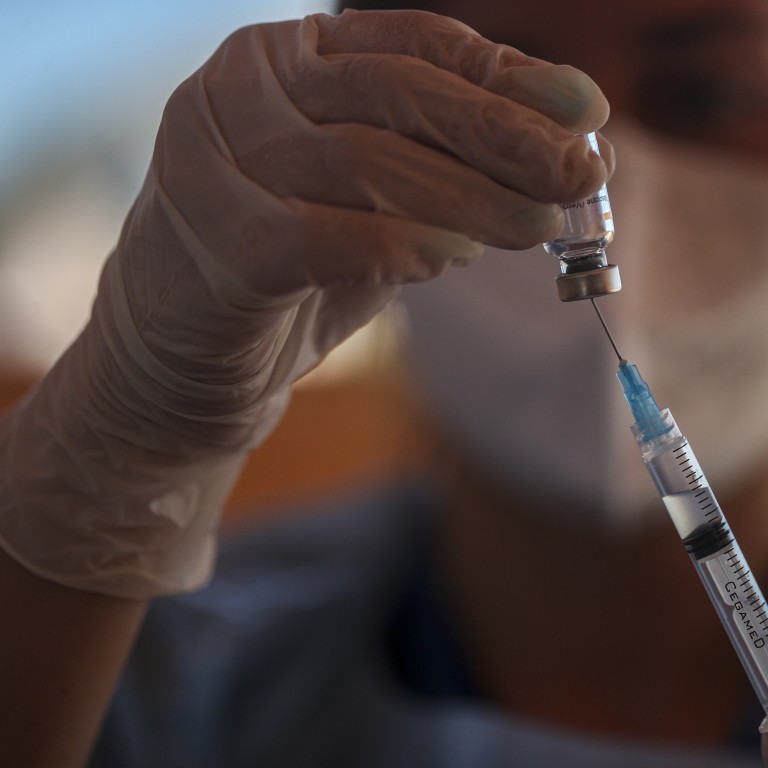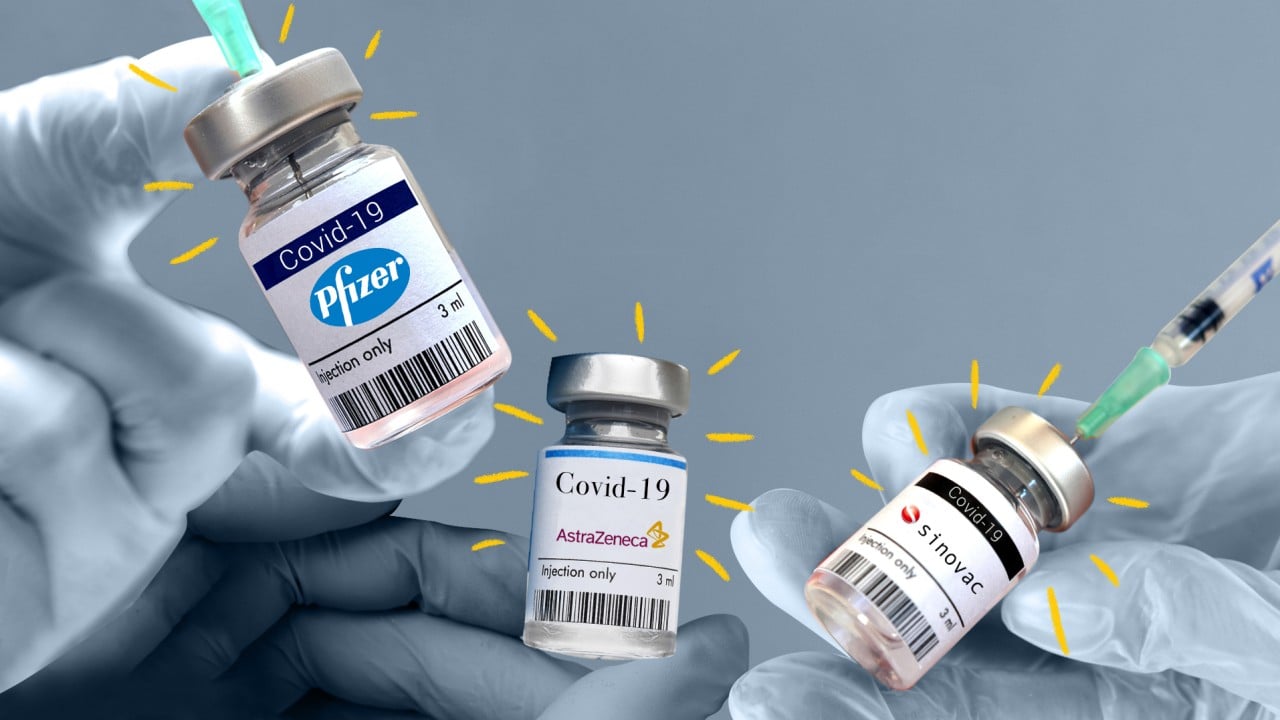
Exclusive | Chile’s big coronavirus vaccine bet on China’s Sinovac shots
- The South American country hopes to reach herd immunity by the middle of the year and is nearly halfway to vaccinating its population
- The Chinese jab has played a major part in the campaign, despite not releasing final phase data
The talks began as far back as May last year.
That is when the country’s health authorities started discussions with developers of potential vaccines around the world to conduct clinical trials in Chile and open up access to vaccines for a later national roll-out.
More than 6.6 million of the 19 million people in Chile have had at least one shot of a coronavirus vaccine and more than 3.5 million – or nearly one-fifth – have had both doses. In comparison, only 2.1 per cent of neighbouring Brazil’s more than 210 million people have received two vaccine shots.
In Chile, the bulk of the doses so far have been the Chinese-made Sinovac vaccine.
Rodrigo Yanez, Chile’s vice-minister of trade and its lead negotiator to procure coronavirus vaccines, said the country placed an “important bet” on Sinovac, moving quickly to buy shots of its CoronaVac vaccine as well as doses of the Pfizer-BioNTech vaccine.
“I would say the strategy was to put eggs in different baskets, and to start talks with the pharmaceutical companies very early – we started this in May last year,” Yanez said. “There was an important bet in Sinovac because we received already 12 million of them and 1.3 million of Pfizer.”
Sinovac was one of several pharmaceutical companies that held phase 3 clinical trials in Chile, and Chile’s participation in the trials gave the country earlier access to the doses.
CoronaVac was initially reported to have a 78 per cent efficacy rate in trials in Brazil but that later revised down to 50.4 per cent – well below the 95 per cent and 94 per cent efficacy rates for the Pfizer and Moderna vaccines that wealthier countries have rapidly bought. And while Sinovac has announced the results, the company has yet to share the full data.
Peter English, a consultant in communicable disease control, said in a statement after the findings were published that while the company described overall findings from Sinovac trials conducted in Brazil and Turkey, there was no data from the trials in Indonesia and Chile.
The information in the press release was “limited”, he said, without a detailed breakdown of data, including on the ages of participants in the clinical trials.
Like their counterparts in Indonesia, Turkey and the United Arab Emirates, leaders in Chile have had the Sinovac jab to try to boost public confidence in the vaccine.
Yanez said Chile would “keep working with scientists from Indonesia, from Turkey, from Brazil to also share information”. “This is something that we see as a shared effort in a global challenge.”
Yanez said health regulators in Chile also looked to their own scientists to make a decision. He said the Pontifical Catholic University of Chile was carrying out its own phase 3 trials for the Sinovac jab and when those were completed, all of the data would be released – possibly within days.
“Chileans generally were maybe more reluctant to take the vaccine before we started, but as we are running with our own scientists here, developing our own data in terms of vaccines, both in terms of efficacy and safety, we are also able to make decisions with our own data,” Yanez said.
“After the roll-out of this campaign, the mistrust or concerns of getting the shot have dropped dramatically. Today, national polls show only 10 per cent would not be willing or thinking of taking the vaccine, and that fell from 35 to 40 per cent in previous months.”
While Chile’s health regulator initially advised that the Sinovac vaccine should not be used for the higher risk group of individuals aged 60 and above, the country’s health ministry later cited results from the Catholic University showing that adverse effects in elderly adults were “minimal”.
Yanez said more than 80 per cent of the elderly population in Chile had received their shots, mostly from Sinovac, which had shown an “extremely good safety profile and antibody generation”.
Still, Chile is struggling with its second wave of Covid-19 despite its vaccinations, recording its highest number of daily cases since the pandemic began last week at 7,084 cases.
Yanez said there was “always a risk” that people would drop their guard given the pace of the vaccine roll-out, but that nearly two-thirds of the country had been placed under strict lockdown measures to contain the outbreak. But the hope was that herd immunity could be reached by the middle of the year, he said.



